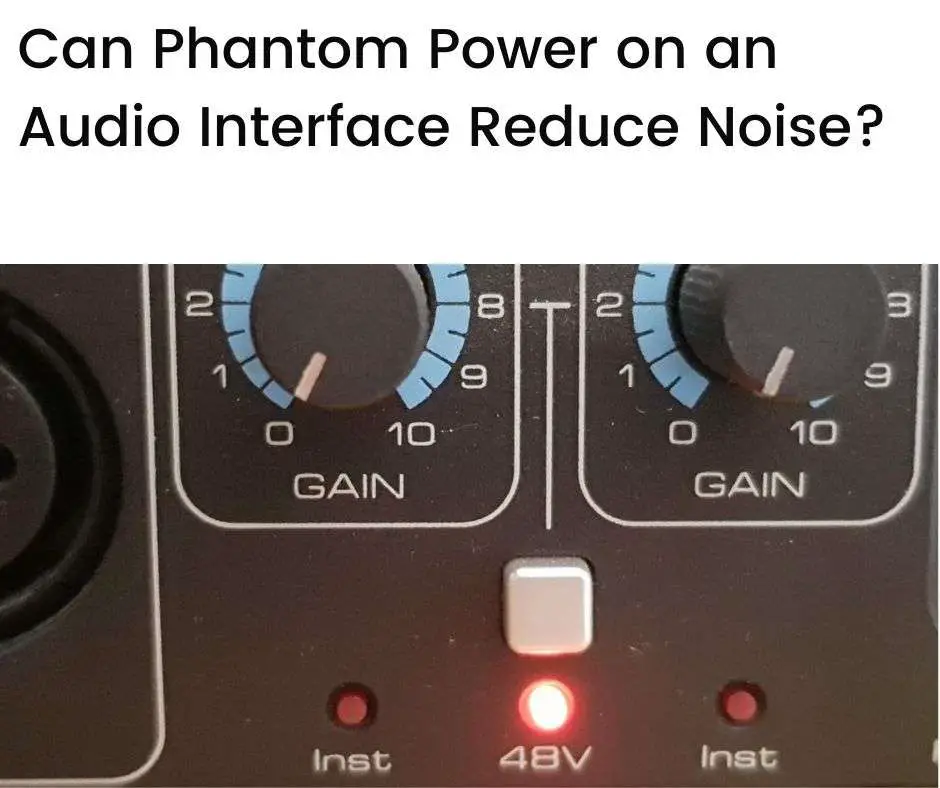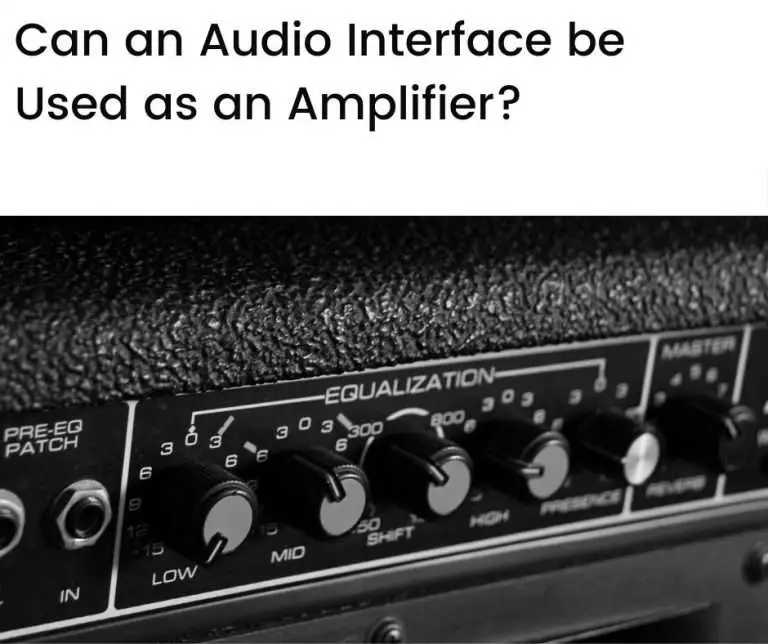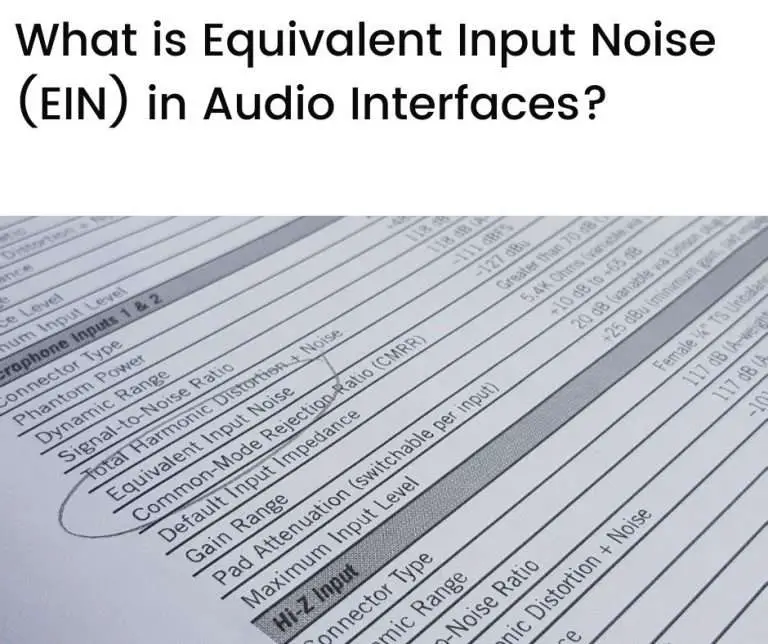Phantom power is used for delivering DC current to active devices such as condenser mics. It is available with many audio interfaces. Phantom power does not, however, reduce noise. It works with balanced audio cables that have noise-reducing properties. It is, therefore, merely this association with balanced systems that gives the impression that phantom power reduces noise.
In this article we’ll look at:
- Why phantom power can appear to reduce noise
- Why is phantom power called “phantom”?
- How balanced audio cables reduce noise
- Why phantom power is delivered through balanced audio cables
- Conclusion
Why phantom power can appear to reduce noise
Many audio interfaces include a phantom power switch (often labeled as “48V” or “P48”) that’s linked to one or more microphone inputs.
Phantom power is used for supplying a DC current to active devices such as condenser mics through balanced audio cables.
Condenser mics require an additional current in order to operate. They are sensitive mics that are favored in studio environments, but cannot produce enough output current on their own—phantom power provides the additional current that they need.
But why does phantom power appear to reduce noise?
Phantom power, in itself, is merely a type of power supply—it does not reduce noise.
But the balanced audio cables through which phantom power flows incorporate noise-reducing features, and this is why phantom power may appear to reduce noise.
Why is phantom power called “phantom”?
The reference to “phantom” in phantom power is due to:
- The appearance of no visible (separate) power supply or power cables when provided directly from an audio interface—both power and audio is delivered through the same balanced audio cable
- The fact that in balanced audio cables, when the same voltage is applied to its two active conductors (each relative to ground), there’s no voltage between the conductors—this gives the impression that any current delivered is “phantom”
How balanced audio cables reduce noise
Balanced audio cables are used for supplying phantom power to balanced devices such as condenser mics.
They have three conductors (rather than two) and are designed to operate with specialized circuitry at their receiving ends—where the cable plugs into the device that’s receiving the audio signal, such as an audio interface.
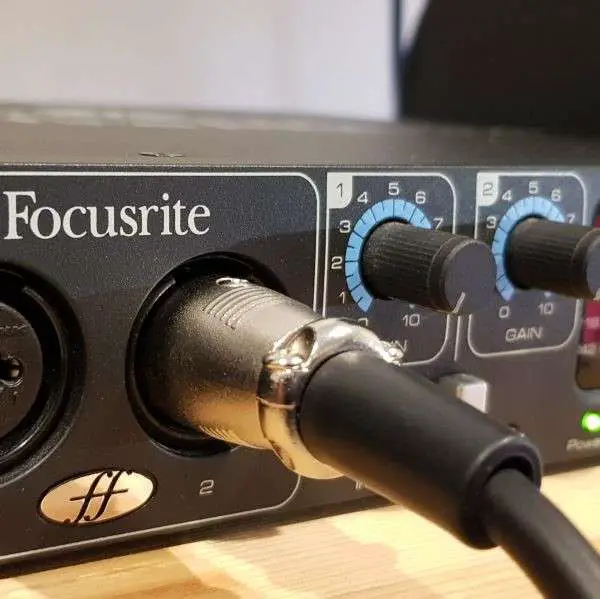
Two of the conductors in a balanced audio cable carry positive and negative (active) signals, which are phase-inverted copies of each other, and the third conductor goes to ground.
At the receiving end of the cable, the specialized circuitry re-inverts the phase of the negative signal so that it coincides with the positive signal. When this is done, any common interference that may have developed along the positive and negative conductors will cancel out—this reduces noise.
The diagram below illustrates this process in balanced cables:
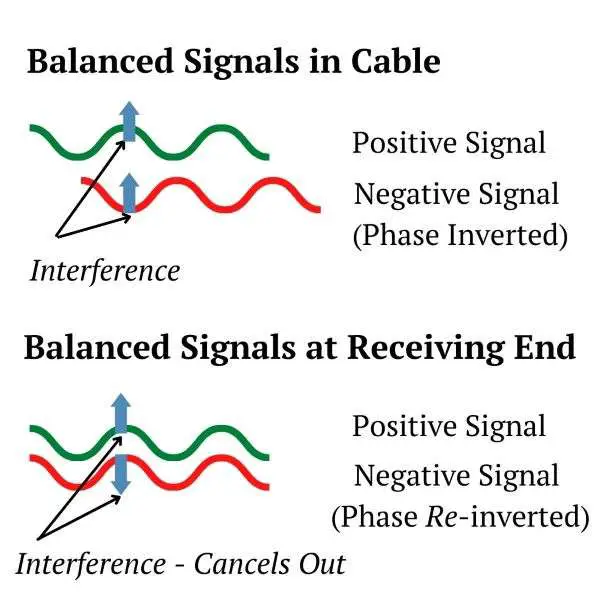
Why phantom power is delivered through balanced audio cables
Phantom power is designed for use with devices that have balanced outputs, such as condenser mics.
If unbalanced devices are used with phantom power, they may be permanently damaged. This is because such devices may not have the necessary protection against the DC current that phantom power provides.
Since phantom power is designed for use with balanced outputs, it should also be delivered through balanced cables. And as we’ve seen, balanced cables can reduce noise due to their interference-canceling properties.
Hence, since phantom power goes hand-in-hand with balanced cables and balanced systems, it’s easy to think that phantom power reduces noise—but it does not. It’s the balanced cables and systems that help to reduce noise when using phantom power, not the phantom power itself.
Conclusion
Phantom power is available with many audio interfaces. It is used to power active devices, such as condenser mics, through balanced audio cables.
Balanced audio cables and their connected systems are uniquely designed to reduce interference and noise. This is due to the way in which audio signals are carried and processed in these systems.
Phantom power should only be used with balanced devices—they can permanently damage unbalanced devices if connected to them, due to the inability of such devices to accommodate the DC current that phantom power delivers.
When using the in-built phantom power supply that comes with audio interfaces, it should be delivered through balanced audio cables. This gives the impression that phantom power can reduce noise—but it does not.
Any observed improvements in noise levels when using phantom power, all else equal, is due to the noise-reducing properties of the associated balanced cables and systems, not the phantom power itself.

